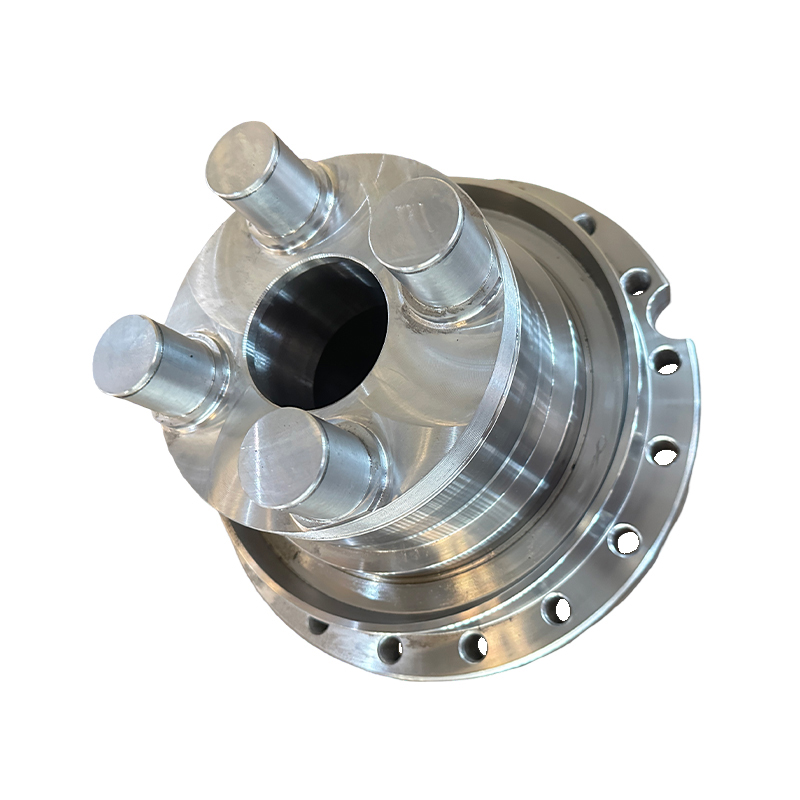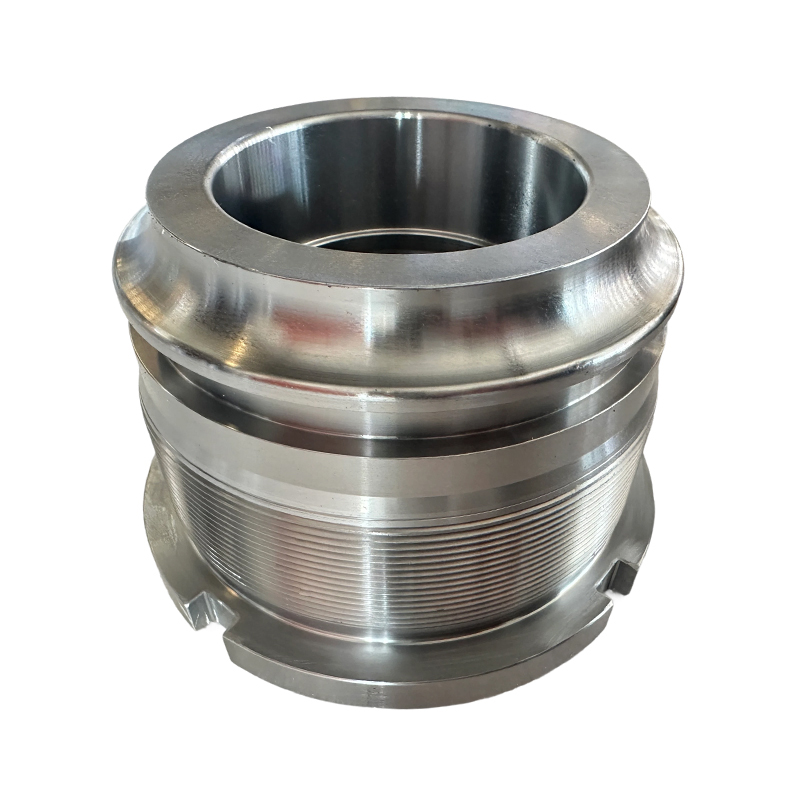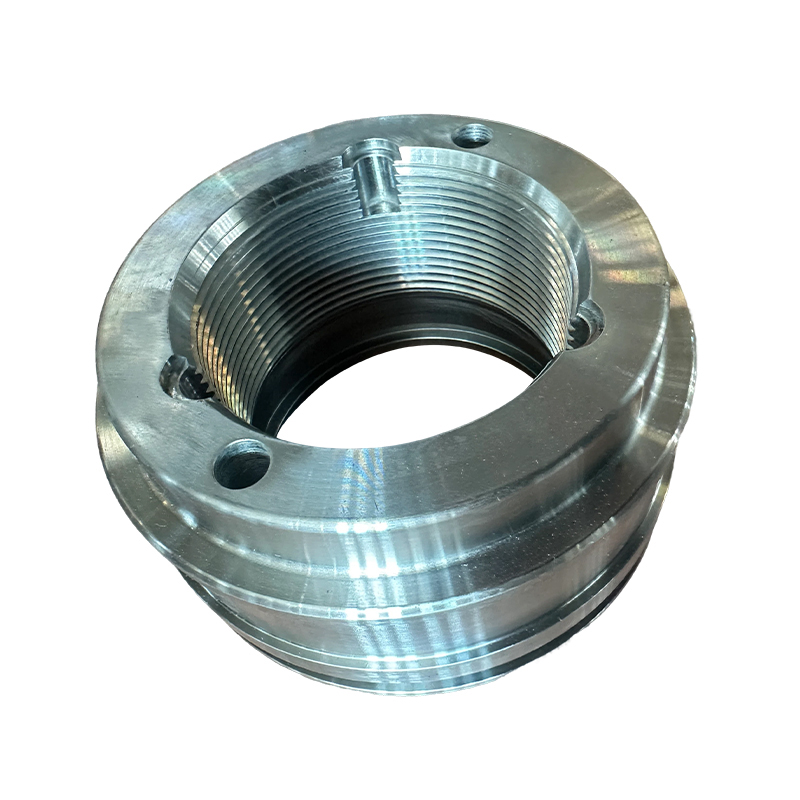How to improve the stability of piston in high temperature environment by optimizing the cooling method?
Release Time : 2025-05-21
The piston is one of the key components in the internal combustion engine or hydraulic system, and it undertakes multiple tasks of withstanding high temperature, high pressure and high-speed movement. Especially in engineering machinery, such as excavators, loaders, bulldozers and other equipment, the piston is in extreme working environment for a long time during the operation of the engine, and it is very easy to cause thermal expansion, deformation and even fatigue fracture due to excessive temperature. Therefore, how to improve the stability of the piston in high temperature environment by optimizing the cooling method has become an important issue to improve the reliability and service life of the equipment.
1. Thermal load challenges faced by the piston
During the operation of the internal combustion engine, the gas temperature in the combustion chamber can be as high as 2000℃ or more, and the top of the piston is directly exposed to the combustion flame and is subjected to extremely high heat load. This high temperature will not only cause the performance of the piston material to deteriorate, but may also cause local softening, thermal stress concentration and other problems, thereby affecting the working efficiency and safety of the entire engine. Especially in high-load and continuous operation engineering machinery, this thermal load problem is more prominent.
Therefore, relying solely on high-strength wear-resistant materials (such as alloy cast iron and aluminum alloy) cannot completely solve the negative impact of high temperature. Effective cooling technology must be combined to truly achieve stable operation of the piston at high temperature.
2. Traditional cooling methods and
Traditional piston cooling methods mainly include air cooling and oil cooling:
Air cooling: Mainly used in air-cooled engines, the outside of the piston is cooled by airflow. This method has a simple structure, but limited heat dissipation capacity, and it is difficult to cope with the large amount of heat generated by modern high-performance engines.
Oil cooling: The cooling effect is achieved by spraying the oil to the bottom of the piston or circulating it in the internal oil channel. Although more effective than air cooling, there is still a problem of insufficient cooling under high-load conditions, especially when frequent start-stop or long-term full-load operation, the rise in oil temperature will reduce its cooling efficiency.
These traditional methods have gradually exposed problems such as low cooling efficiency, slow response, and uneven temperature distribution in the face of increasingly harsh engineering application environments, and are in urgent need of further optimization and upgrading.
3. Application and development of modern cooling technology
In recent years, with the advancement of manufacturing technology and the development of materials science, a variety of new cooling technologies have been introduced into piston design to improve its stability in high temperature environments:
Piston inner cavity oil cooling technology: a special cooling oil cavity is set inside the piston, and cooling oil is injected into it through an external oil pump to form a circulating cooling system. This design can greatly improve the cooling efficiency, especially for high-power diesel engines.
Piston bottom surface oil spray cooling: use a high-pressure oil nozzle to directly spray oil to the bottom of the piston to quickly take away the heat. Compared with traditional oil cooling methods, this method can more accurately control the temperature of hot spots and reduce thermal stress concentration.
Composite materials and coating technology: coating the surface of the piston with high thermal conductivity and high temperature resistant ceramic coating or carbon-based material can not only enhance the heat dissipation capacity, but also play a heat insulation role to protect the piston body from overheating damage.
Structural optimization design: through computer simulation, the shape, wall thickness, cooling channel, etc. of the piston are optimized to make the heat distribution more uniform and avoid structural failure caused by local overheating.
Intelligent temperature control system: Combined with sensors and control systems, it monitors the temperature changes of the piston in real time, and dynamically adjusts the cooling intensity according to actual needs to achieve "on-demand cooling", which is both energy-saving and efficient.
4. Benefits of cooling method optimization
Optimizing the cooling method of the piston can not only significantly improve its stability in high temperature environments, but also bring many practical benefits:
Extend service life: A good cooling system can effectively reduce thermal fatigue damage and delay material aging, thereby extending the service life of the piston and the entire engine.
Improve operating efficiency: Stable temperature control helps to maintain an ideal combustion state, improve fuel economy and power output.
Reduce failure rate: Reasonable cooling can prevent common failures such as cylinder jamming, cylinder pulling, and ablation caused by high temperature, and improve the reliability of equipment operation.
Adapt to complex working conditions: For engineering machinery that works in high temperature, high humidity, and high dust environments for a long time, an efficient cooling system is the key to ensuring the continuous and stable operation of the equipment.
In summary, as a core component of an internal combustion engine or hydraulic system, the stability of the piston in a high temperature environment directly affects the overall performance and life of the equipment. By continuously optimizing the cooling method, starting from structural design, material selection, intelligent control and other aspects, the thermal management capability of the piston can be effectively improved, so that it can still maintain a good working condition under complex working conditions of high pressure, high temperature and high speed. This is not only a reflection of the progress of engineering technology, but also the key to promoting the sustainable development of the construction machinery industry.
1. Thermal load challenges faced by the piston
During the operation of the internal combustion engine, the gas temperature in the combustion chamber can be as high as 2000℃ or more, and the top of the piston is directly exposed to the combustion flame and is subjected to extremely high heat load. This high temperature will not only cause the performance of the piston material to deteriorate, but may also cause local softening, thermal stress concentration and other problems, thereby affecting the working efficiency and safety of the entire engine. Especially in high-load and continuous operation engineering machinery, this thermal load problem is more prominent.
Therefore, relying solely on high-strength wear-resistant materials (such as alloy cast iron and aluminum alloy) cannot completely solve the negative impact of high temperature. Effective cooling technology must be combined to truly achieve stable operation of the piston at high temperature.
2. Traditional cooling methods and
Traditional piston cooling methods mainly include air cooling and oil cooling:
Air cooling: Mainly used in air-cooled engines, the outside of the piston is cooled by airflow. This method has a simple structure, but limited heat dissipation capacity, and it is difficult to cope with the large amount of heat generated by modern high-performance engines.
Oil cooling: The cooling effect is achieved by spraying the oil to the bottom of the piston or circulating it in the internal oil channel. Although more effective than air cooling, there is still a problem of insufficient cooling under high-load conditions, especially when frequent start-stop or long-term full-load operation, the rise in oil temperature will reduce its cooling efficiency.
These traditional methods have gradually exposed problems such as low cooling efficiency, slow response, and uneven temperature distribution in the face of increasingly harsh engineering application environments, and are in urgent need of further optimization and upgrading.
3. Application and development of modern cooling technology
In recent years, with the advancement of manufacturing technology and the development of materials science, a variety of new cooling technologies have been introduced into piston design to improve its stability in high temperature environments:
Piston inner cavity oil cooling technology: a special cooling oil cavity is set inside the piston, and cooling oil is injected into it through an external oil pump to form a circulating cooling system. This design can greatly improve the cooling efficiency, especially for high-power diesel engines.
Piston bottom surface oil spray cooling: use a high-pressure oil nozzle to directly spray oil to the bottom of the piston to quickly take away the heat. Compared with traditional oil cooling methods, this method can more accurately control the temperature of hot spots and reduce thermal stress concentration.
Composite materials and coating technology: coating the surface of the piston with high thermal conductivity and high temperature resistant ceramic coating or carbon-based material can not only enhance the heat dissipation capacity, but also play a heat insulation role to protect the piston body from overheating damage.
Structural optimization design: through computer simulation, the shape, wall thickness, cooling channel, etc. of the piston are optimized to make the heat distribution more uniform and avoid structural failure caused by local overheating.
Intelligent temperature control system: Combined with sensors and control systems, it monitors the temperature changes of the piston in real time, and dynamically adjusts the cooling intensity according to actual needs to achieve "on-demand cooling", which is both energy-saving and efficient.
4. Benefits of cooling method optimization
Optimizing the cooling method of the piston can not only significantly improve its stability in high temperature environments, but also bring many practical benefits:
Extend service life: A good cooling system can effectively reduce thermal fatigue damage and delay material aging, thereby extending the service life of the piston and the entire engine.
Improve operating efficiency: Stable temperature control helps to maintain an ideal combustion state, improve fuel economy and power output.
Reduce failure rate: Reasonable cooling can prevent common failures such as cylinder jamming, cylinder pulling, and ablation caused by high temperature, and improve the reliability of equipment operation.
Adapt to complex working conditions: For engineering machinery that works in high temperature, high humidity, and high dust environments for a long time, an efficient cooling system is the key to ensuring the continuous and stable operation of the equipment.
In summary, as a core component of an internal combustion engine or hydraulic system, the stability of the piston in a high temperature environment directly affects the overall performance and life of the equipment. By continuously optimizing the cooling method, starting from structural design, material selection, intelligent control and other aspects, the thermal management capability of the piston can be effectively improved, so that it can still maintain a good working condition under complex working conditions of high pressure, high temperature and high speed. This is not only a reflection of the progress of engineering technology, but also the key to promoting the sustainable development of the construction machinery industry.







